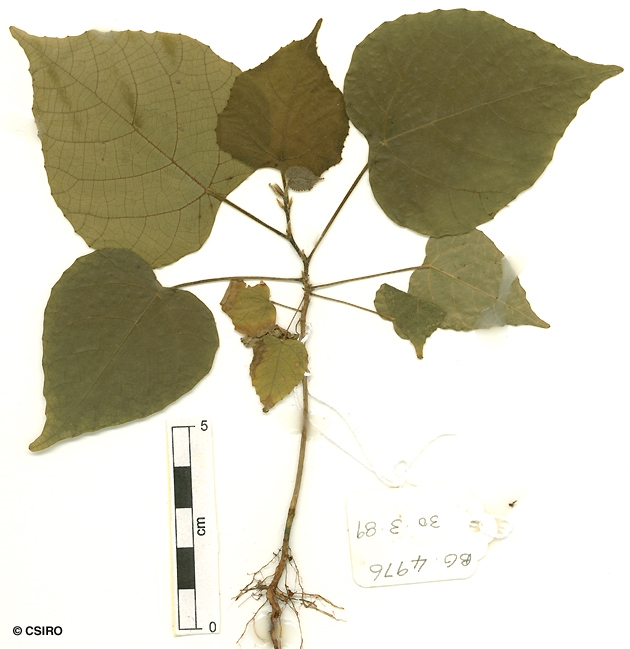Australian Tropical Rainforest Plants - Online edition
Mallotus surculosus P.I.Forst.



Forster, P.I. (1999) Austrobaileya 5: 488. Type: Qld.Cook District: Shiptons Flat, 9 km from Lions Den Hotel, 10 Dec. 1993, P. I. Forster PIF14420 (holo: BRI; iso: A, Mel, QRS).
Bleeding Heart
Seldom exceeding 30 cm dbh. Blaze conspicuously layered.
Leaf blades peltate, about 9-13 x 5.5-9.5 cm, petioles about 3 cm long. Small shiny yellowish glands visible with a lens on both the upper and lower surfaces of the leaf blade. Stellate hairs visible with a lens on the underside of the leaf blade and also on the petioles and twigs. Midrib plus two major and about four minor lateral veins radiating from the point of attachment of the petiole. Stipules about 3 mm long, hairy.
Capsules echinate, sparsely stellate hairy and clothed in yellow glands. The trichomes also hairy. Seeds +/- globular, about 3.5 mm diam.
Cotyledons orbicular, about 10-12 mm diam., upper surface clothed in simple hairs and pale yellow glands. At the tenth leaf stage: leaf blade broadly ovate, apex acuminate, base peltate or obtuse, margin dentate, both the upper and lower surfaces hairy, hairs simple and stellate, small yellow glands visible on both the upper and lower surfaces; petiole and terminal bud densely clothed in simple and stellate hairs; stipules triangular, hairy. Seed germination time 21 days.
Endemic to Queensland, occurs in CYP and NEQ. Altitudinal range from near sea level to 450 m. Grows in monsoon forest and drier rain forest. This species is favoured by disturbance and is a typical regrowth species in these areas.





